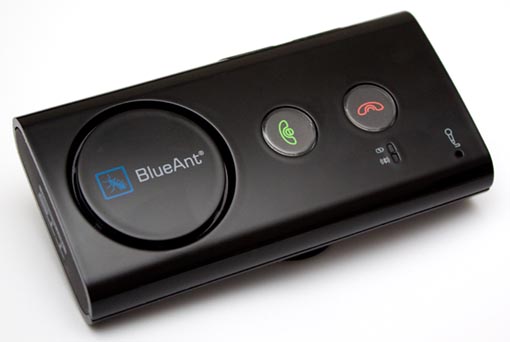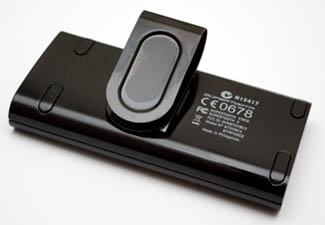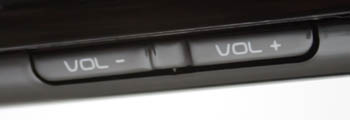
As we motor around, we should keep our hands on the wheel and our eyes on the road. Yeah, right. We also need to keep an eye on the rear-view mirror to see if traffic cops are about to hassle us for talking on the cell phone. There are even places that forbid texting while driving. Imagine!
BlueAnt's new Supertooth 3 takes care of cell phone operation beautifully, making communication as comfortable as can be, and as hands-free as possible. The well designed device also greatly simplifies and friendly-izes its Bluetooth setup process, even the traditionally arcane issue of pairing it with your phone.
Supertooth 3 builds on two other BlueAnt products that I've reviewed, the Supertooth), and the Supertooth Light, each worthy of raves in turn. This new 3 goes the extra nine miles to make life with the hands-free device easy. And rewarding. It earns my highest rating, despite a few minor gotchas.
Volume and noise
Let's start with volume. True to its legacy, Supertooth 3 dishes up plenty of sound that doesn't distort much when you crank it up, even to the max. Intended for use in a moving vehicle, this thing is loud, and loud is a good thing. You'd expect it to have to compete with road noise, engine hum (roar, as the case may be), and people chatter. If you're carpooling - you are carpooling? - loud is essential.
Indeed, for carpool use Supertooth 3 offers plenty more than loudness. It will pair with up to eight devices, for example, so multiple people in the car can take advantage of it without appointing a committee to fiddle with its controls. Fortunately, it only talks to one phone at a time, so there's no teleconference formerly known as "party line" - going on around you.
In my test, the pairing process went swimmingly. I did mostly nothing, and didn't even read the manual beforehand. The device talked me through, literally, in a friendly robotic voice that reminds of a female version of a movie robot.
Answering calls
When a call comes in, the Supertooth 3 announces the fact. Loud. The voice even says who the call is from. You can just say "OK," to answer, or do the normal thing with the buttons on the "3" or on the phone. (Say "Accept," "Accept call" or "Answer" if you'd rather) The device's built-in voice recognition figures out what you said and pipes the call from the phone to the speaker. Sweet!
If the Supertooth 3 knows who the caller is, it says so. This feature depends on its having your cell phone's contacts list in its clutches (Security! - or rather lack of it). The transfer, though not the updating, is automatic with some phones, My Centro does not support the automatic feature - according to the robotic voice - so I had to do the transfer manually, an easy process guided by the product's documentation. After you add, subtract, or change any entries on the phone, updating the Supertooth 3 is non-automatic. The user guide says this could cause a caller's number to be recognized incorrectly. It also mentions problems with loading contacts from some SIM cards. Loading my Centro's 130 or so contacts took only a couple of minutes. This would go faster on the new Treo models. The robotic voice coaches the whole process, and when it's done announces that the device is ready to rock.
Usability

Like any Bluetooth device, Supertooth 3 has to be within Bluetooth range to do its thing. Nominally that's 10 meters (32.8 feet). For practical purposes out here in the real world, it's a few feet. So, once you move away from the car, your cell phone isn't paired anymore, and the speaker phone isn't "connected." Amazingly, it detects vibration when you return and slam the car door, and re-establishes its connection automatically. Robotics at their best!
Some of the speakerphone's more advanced features depend on Bluetooth version 2.0, which is faster and better, and cooks breakfast on even-numbered odd Wednesdays when there's a full moon and a low tide on the Atlantic coast. According to Palm's handy comparison chart for current models, only the Treo Pro and 850w have Bluetooth 2.0. Centro does not. In my tests with the Centro, however, I found that it does what I want done, and well - most of the cool functions are in the speakerphone, not the smartphone.
Power

The Supertooth 3's battery recharges from house current in about three hours. The kit also includes a car charging adapter, and the device will charge from a USB cable hooked to your computer. A USB cable isn't included, but they're cheap and readily available. I found a two-meter USB 2.0 A to Mini-B cable at an online vendor for $3.00 plus shipping, but I can just use one of the ones that came with my digital cameras for free. BlueAnt promises 15 hours of talk time on a full charge or 800 hours standby - plenty for anyone but the terminally obsessed.

Besides talk buttons, the only other controls on the device are volume up/down, small electronic switches on the side. The robotic voice announces volume maximum or minimum.
Sun visor mounting
Like its siblings, the Supertooth 3 sports two grippy magnets on its back, onto which a supplied steel clip snaps to quickly and easily mount the device on your sun visor. The kit includes two of the clips, so you can leave one in your "other" car. The product carries BlueAnt's two-year repair-or-replace warranty.
Simplicity is wonderful, but it comes at a price. To get at some of the advanced features, or to turn some of the nicer ones on and off, you have to press and hold the buttons for X amount of time - one second to turn the device on, six to go into re-pairing mode, another magical combination to turn on spoken word recognition to answer a call. Keep the user guide handy, or just set it up the way you like and leave it alone. In particular, please don't try to negotiate any of these button pushing codes while driving near me.
Conclusion
BlueAnt's Supertooth 3 is an outstandingly well thought-out product that performs exceptionally well and greatly simplifies the process of getting it working over Bluetooth. It's admirably loud, and implements electronic signal processing to control noise. Even with some of its features reserved for Bluetooth 2.0 smartphones, it does the job well on any model. You can get it here for $109.95.

|
|
| Pros |
Outstanding speakerphone sound quality (output)
Excellent electronic noise reduction compensates for ambient noise levels
Voice-guided setup and pairing, easy as pie!
Loud, with very little distortion at highest levels
Great battery life expectation
Car and house current chargers included
Pairs with up to eight devices
Adaptable magnetic visor mounting
|
|
| Cons |
Advanced features depend on support from phones, which varies greatly
Uploaded caller directory (if supported) puts sensitive information at risk.
On and off functions are oddly placed
Works best with Bluetooth v2.0, meaning Treo Pro and 800w |
|